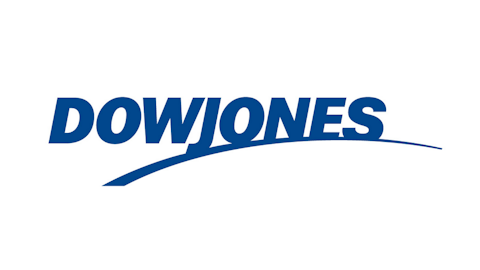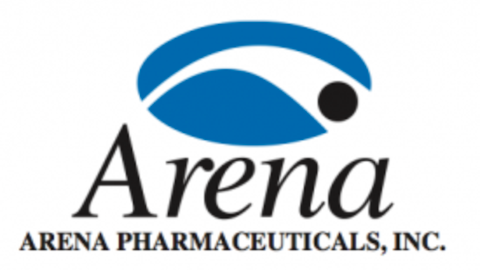Only 19 drugs have ever netted at least $5 billion in annual sales — and most were at their peak –according to a list compiled by Simon King of Forbes earlier this year. Lipitor from Pfizer Inc. (NYSE:PFE) peaked at $13.7 billion in 2006 and remains the only drug to achieve annual sales of $10 billion or more. Humira from AbbVie Inc (NYSE:ABBV) will eclipse the watermark this year, which is quite an amazing feat when you consider the history of the pharmaceutical industry.

Big Pharma has learned the hard way that having ridiculously successful products is great when the checks are rolling in, but they can be transformed into huge liabilities when the music stops. Combine that with an industry stuffed full of competition and it is easy to see why many, including King, say that the Golden Age of the Blockbuster is gone. Companies will have a much more difficult time fielding single drugs that enjoy this kind of success. Is that sentiment right? Or are analysts just fatigued from the industry’s patent cliff? Let’s review.
A Golden Age dawns
Big Pharma exploded onto the scene during the three-year span from 1996 to 1998 when a record 135 drugs received regulatory approval in the U.S. It should be no surprise that many of the megablockbuster small molecules were approved during this time.
| Company | Drug, treatment | Approval date | Peak sales (world) |
|---|---|---|---|
| Pfizer Inc. (NYSE:PFE) | Lipitor, high cholesterol | Dec. 17, 1996 | $13.7 billion |
| Bristol Myers Squibb Co. (NYSE:BMY) / Sanofi SA (ADR) (NYSE:SNY) | Plavix, blood clots | Nov. 17, 1997 | $9.32 billion |
| AstraZeneca plc (ADR) (NYSE:AZN) | Seroquel, antipsychotic | Sept. 26, 1997 | $6.18 billion |
| Merck & Co., Inc. (NYSE:MRK) | Singulair, asthma | Feb. 20, 1998 | $5.48 billion |
| Eli Lilly & Co. (NYSE:LLY) | Zyprexa, antipsychotic | Sept. 30, 1996 | $5.03 billion |
| Johnson & Johnson (NYSE:JNJ) | Levaquin, infections | Dec. 20, 1996 | $1.36 billion |
Sources: FDA Orange Book, FirstWord Pharma.
The euphoria for the new treatments was bound to end at some point, which is exactly how the industry found itself in the midst of the patent cliff in the first place. As you can imagine, the competition eventually caught on to the enormous potential of cholesterol, antipsychotic, and asthma drugs. Absent a major research lab breakthrough, investors likely won’t see any spectacular gems in these markets.
If everyone has a drug, then no one has THE drug
Companies have instead decided to throw their weight behind the next big markets: diabetes, cancer, and immunology. Even these indications are becoming crowded, though. Take diabetes, for example. Despite bringing in $5.75 billion in 2012, Merck & Co., Inc. (NYSE:MRK)’s Januvia/Janumet franchise stumbled out of the gates this year thanks to increased competition. Total sales slipped 1.5% from the year-ago period. Newer therapies, such as Invokana from Johnson & Johnson (NYSE:JNJ), have nudged the bar upward by offering patients more convenience and improved safety characteristics.
Does all of this market saturation foreshadow a bleak future for an industry currently ripe with blockbusters? There may be a period of calm ahead, but investors cannot rule out that future game changers won’t emerge.
The next frontier?
The one thing that each of history’s most successful drugs has in common is that each drastically improved upon the standard of care at the time of launch. Whether it was treating a disease that was never before treatable (severe rheumatoid arthritis) or pioneering a new class of drugs altogether (TNF-alpha inhibitors), each of the most successful drugs in history did not get there by targeting incremental improvements.
So, what fields could offer investors the next batch of game-changing drugs?
Investors are already imagining what could be possible in the newly opened obesity market. The Food and Drug Administration approved Qsymia from VIVUS, Inc. (NASDAQ:VVUS) and Belviq from Arena Pharmaceuticals, Inc. (NASDAQ:ARNA) in 2012. These treatments may or may not take off on their own — each offers weight loss of 6% to 8% over one year — but they could certainly be a good starting point for future, more effective compounds.
Additionally, stem cell therapies have remained elusive as the industry’s ultimate Holy Grail. Osiris Therapeutics, Inc. (NASDAQ:OSIR) received Canadian approval for the world’s first stem cell drug, Prochymal, for children battling acute graft-versus-host disease, or GvHD, last year. The approval meant more symbolically than to the bottom line, but it definitely put the potential of stem cells front and center for investors.
It is easy to see the magnitude that the world’s first major stem cell approval (not Prochymal) would merit, although perhaps difficult to comprehend. Imagine a therapy that could safely and effectively treat heart attack or stroke patients just days after arriving in a hospital. Or how much safer organ transplants could become if a broad GvHD treatment was developed. Stem cells could not only treat diseases that damage important muscles such as the brain and hear, but could actually reverse the damage altogether. Unfortunately, most companies dabbling in stem cell research are very small and the best approach has yet to be determined (perhaps it has yet to be created). The potential is there, but the results are lacking.
Foolish bottom line
Is the Golden Age of Blockbusters over? This one may be history, but investors cannot rule out the possibility of future game changers. Drug development is such a lengthy and costly process that no company can target blockbusters from the beginning. Consider that research into adalimumab (Humira) first began in 1993 — 20 years ago! Simply put, we don’t know what we don’t know. However, investors can be pretty certain that more Golden Ages await the pharmaceutical industry.
The article Is the Golden Age of Blockbusters Over? originally appeared on Fool.com and is written by Maxx Chatsko.
Fool contributor Maxx Chatsko has no position in any stocks mentioned. Check out his personal portfolio, his CAPS page, or follow him on Twitter @BlacknGoldFool to keep up with his writing on energy, bioprocessing, and emerging technologies.The Motley Fool has no position in any of the stocks mentioned.
Copyright © 1995 – 2013 The Motley Fool, LLC. All rights reserved. The Motley Fool has a disclosure policy.

